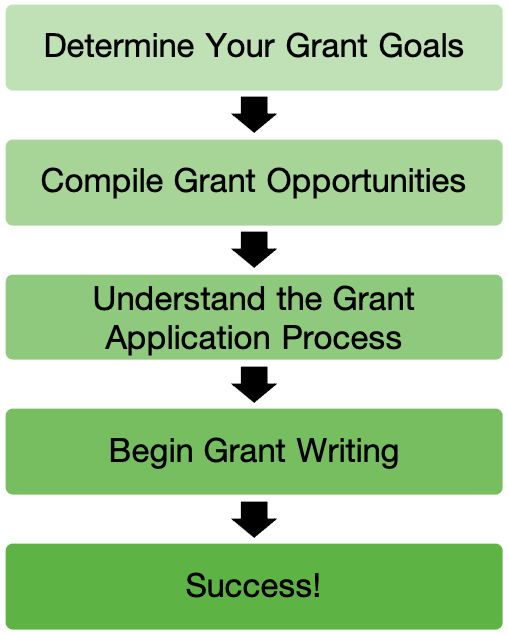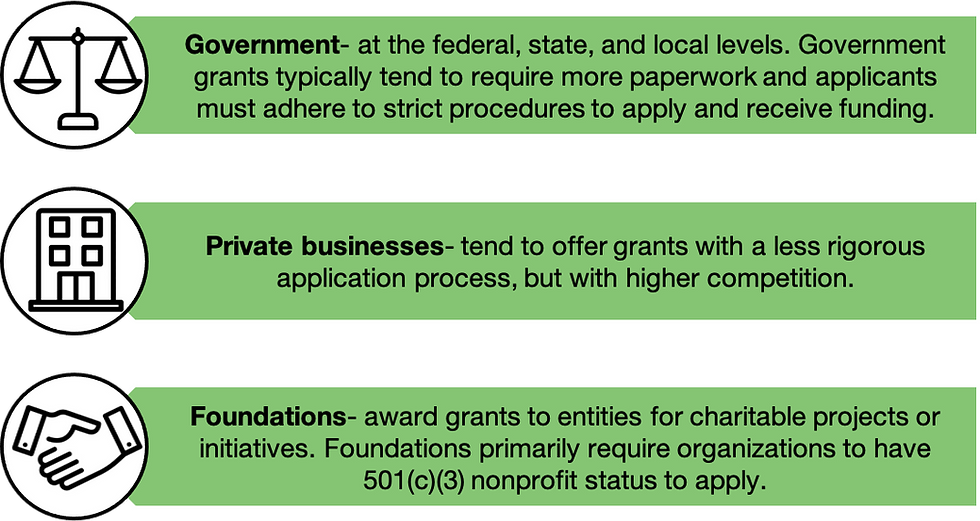Small Business Grant Funding
- kiran560
- Mar 5, 2021
- 3 min read
Updated: Mar 30, 2023
Grants are usually funds given from one entity to another, a grantor to a recipient, through an application process. Some grant awards also consist of non-cash resources such as travel vouchers, equipment, or consulting expertise. Grants enable you to finance new initiatives that may not have been possible under normal operating conditions. This can include funding a specific project or covering general expenses to keep your business afloat. Small business grant funding can serve as a practical way to generate money but should not be your only source of income.
This guide will provide a general overview of how to approach small business grant funding applications by identifying your goals, cataloging your grant opportunities, and beginning the grant application process.

Small Business Grant Funding: The Steps To Start
Before beginning the grant application process, it is imperative to think about your reason for applying to a particular grant. Determine your long-term goals, how this grant will affect your normal operations, if there are other resources you could pursue to achieve your goals, how you will utilize and implement this grant, and finally, how much time and effort you are willing to allocate towards an application. Taking the time to understand your rationale and motivation for applying for a grant will enhance the quality of your grant application.
The next step in approaching grant applications is to decide what type of funding support aligns with you and your entity. Grant funding can be categorized into three main grantor groups:

After determining what type of funding to search for, you should begin compiling a list of potential small business grant funding opportunities into a spreadsheet or Grant Calendar. A useful list will detail several aspects of the application process. This can include the grant amount, description, links, application dates, required documents, level of difficulty, and any notes among other aspects.
Before adding a potential grant opportunity to your spreadsheet, ensure that your entity meets all of the minimum criteria. Adding grants that do not align with your entity will create disorganization and decrease your productivity in applying for grants. Below is an example spreadsheet that you can use to catalog your grants. If you'd like to create your own grant opportunities tracker click this link and make a copy to start your own.

It is recommended to organize your grants by some time criteria such as the application’s due date or the amount of time needed to complete each application. We have provided an in-depth excel spreadsheet available to download as well.
Once you have a list of grants that you are eligible for, you can start the grant application process. This process consists of three main phases:

In this guide, we will focus on the Pre-Award Phase. Begin by conducting extensive research on each grant. You can gather information about a grantor’s mission, application criteria, past grant recipients, and even some tips and tricks on their website. Grantors have varying levels of application requirements and processes. It is important to invest your time to learn about the intricacies of a grant application upfront.
Usually, the grant guidelines will assist applicants through the application process; however, applications can offer vague guidance at times. If you have any lingering questions or would like to know more about any aspect of the application process, do not hesitate to contact the grantor. Keep in mind that this may be your first point of contact with the grantor. Ensure you have thoroughly searched a FAQS page and any fine text before reaching out.

Generic grant proposals lack a competitive chance to receive funding. Tailor your proposal’s format and message to cater to the grantors’ guidelines. Ensure that your ideas align with the grantor and are articulated in key parts of your application, particularly in the cover letter, introduction, and conclusion.

Your job as an applicant is to express your complex ideas simply and straightforwardly. Create an outline detailing the key pieces of information you want to discuss in your proposal to guarantee you do not skip over any information.

To set yourself apart from other applicants, your grant proposal must answer the ‘why’ of funding. Strive to form a narrative surrounding a compelling idea that is memorable and unique.

A grant proposal should not only inform the reader but also convince them your application merits recognition. You can employ any combination of ethos (appeal to ethics), logos (appeal to logic), or pathos (appeal to emotion) to persuade your reader.
Small Business Grant Funding Additional Resources
Arizona Microcredit Initiative (AMI) has consulting and microloan support for yourself and your business. If you have any more questions, you can schedule an appointment today through https://www.azmicrocredit.org/schedule-a-consultation-1 or reach out to us at info@azmicrocredit.org
Continue to Elevate Playbook



















Comments